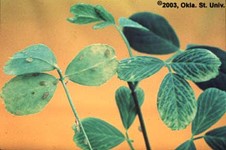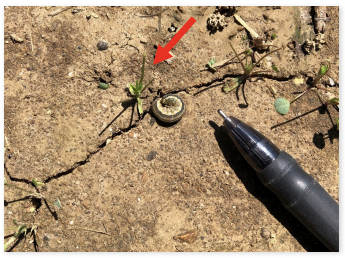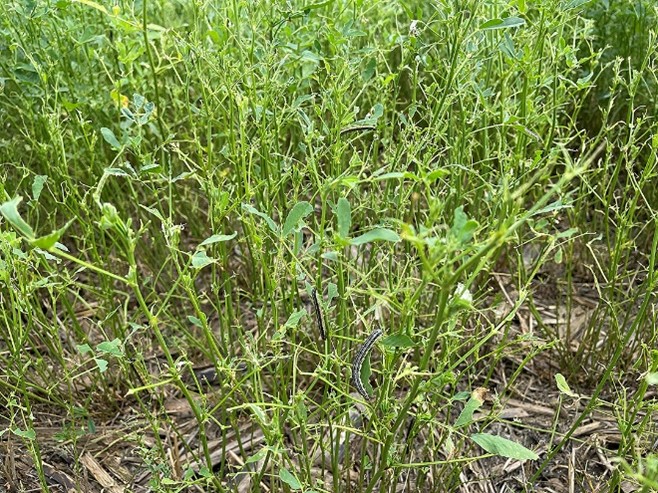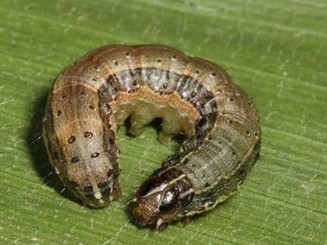Be on the Lookout for Fall Armyworm and Other Pests in Newly Seeded Alfalfa
While much of the state remains in a severe to extreme drought, growers in a few areas, especially those having access to irrigation, may have been able to fit a late alfalfa planting in this season. If this is the case, there are a couple of key insect pests to keep in mind during this time of year. As dry weather persists, spotted alfalfa aphid (SAA) Therioaphis maculata and its damage (Fig. 1 & 2) will continue to be a concern. In new fall seedings, spraying is recommended if aphid numbers exceed 1-2/plant up to formulation of the first trifoliate leaf. In addition to aphids, new seedlings must be carefully scouted for fall armyworms (FAW) Spodoptera frugiperda that can destroy seedlings and cause stand loss (Fig. 3).
Figure 1. Spotted Alfalfa Aphid. OSU Ext.
Figure 2. Spotted Alfalfa Aphid Damage
As the name indicates, numbers of fall armyworm larvae often peak in late summer and early fall resulting in substantial damage to pasture and field crops. Fall armyworm larvae tend to feed on all tender green plant tissues which give infested pastures the appearance of drought. If heavy feeding occurs, plants may become severely defoliated, stunted, or killed.
Figure 3. Alfalfa Seedling Damage. Univ. of Arkansas Extension.
Damage can happen quickly, in some cases overnight. As large numbers of FAW march to their new food source, established alfalfa may be stripped of all leaf tissue, whereas newly seeded alfalfa stands are often totally defoliated (Fig.4 & 5). If plants are stripped of foliage in an established stand, the newly emerging buds should be closely monitored to make sure no fall armyworm larvae are feeding and restricting bud growth. Newly planted alfalfa stands can be destroyed in a matter of days.
Figure 4. FAW defoliation. Nebraska Ext.
Figure 5. FAW plant defoliation. Kansas State Univ.
Several generations of fall armyworm occur in Oklahoma each year. Larvae produced in spring and summer are often light in color ranging from light green to tan. Larvae produced during fall generations often are dark and may be completely black or gray in color. Both color phases of this insect will possess stripes running the length of the body. Identifying characteristics of the larvae include an inverted Y on the head capsule of the insect and four black spots or bumps found on the top of each body segment with those on the next to last segment arranged in a square pattern (Figure 6.). Larvae typically grow through six instars, often reaching a length of 1 ¼ to 1 ½ inches. From egg to adult takes about 30 days.
Figure 6. Fall Armyworm. SANBI
As growing larvae become larger, they can consume substantial amounts of forage in short periods of time. An estimated 80% of larval feeding occurs in the last two instars of development (3-5 days). Larvae are especially active both early and late in the day. Scouting is best accomplished during these periods to gain an accurate estimate of larval numbers. Small larvae are easier to control (.5-.75 inch). The economic threshold for this pest in established alfalfa is 2-3 larvae/sq.ft. and in newly seeded stands (1 larva per sq.ft.).
Unfortunately, relief from this pest won’t come until we get our first “killing freeze” which can vary in occurrence from year to year.
Best control is achieved if 10 or more gallons of formulated spray is applied per acre by ground equipment and 3 gallons by air. Be sure to follow all label precautions and restrictions.
More information on fall armyworm control in alfalfa can be found in CR-7150, Alfalfa Forage Insect Control.






